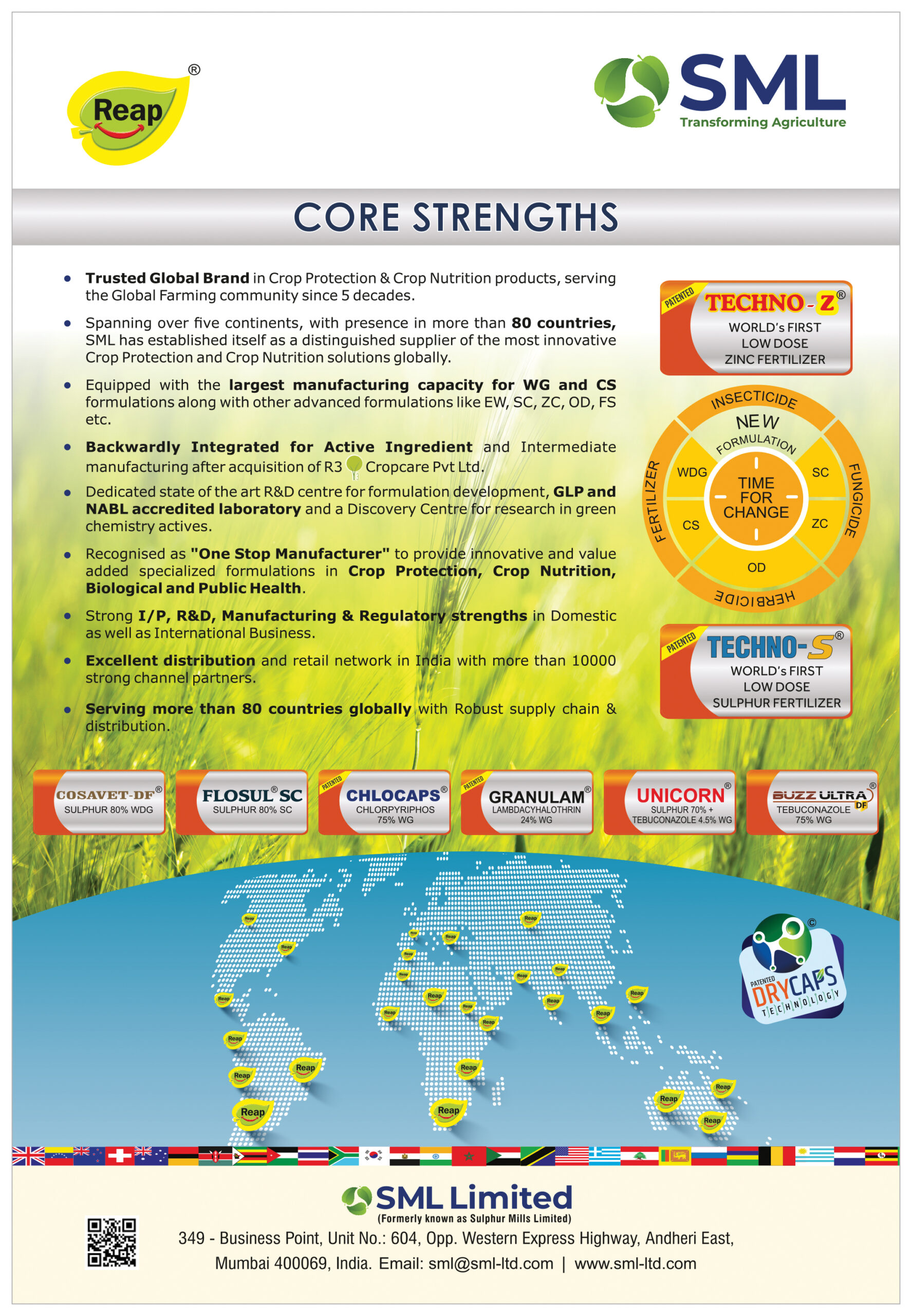Local Perspectives: Argentina, Chile, Colombia, and Uruguay

Scroll Down to Read
By Lauren Milligan
AgriBusiness Global asked four crop protection industry leaders to give their insider’s perspective of factors influencing the crop input industry for their specific country. Our experts give three pointers for doing business in Argentina, Chile, Colombia, and Uruguay.
• Argentina •
 Diego Taube
Diego Taube
Director
Chempro SA
Since December 2023, when Javier Milei, a professional economist, advisor and university professor, an outsider to politics, became President of Argentina, the country is now going through a re-foundational process.
During the presidential campaign, President Milei promised to cut the unnecessary spending in the government and reduce the fiscal deficit, to eventually transform it into fiscal surplus. He gave this task weeks ago to Elon Musk during the Conservative Political Action Conference (CPAC). The images are widely available on the web.
The country is in very bad shape. The inflation during the last year in the office of Alberto Fernandez (2023) was of 211,24%, and in December of that same year it reached 25,5%. We were going forward to a scenario of hyperinflation and of a potential internal civil war.
The government´s budget for 2023 indicated that 19 million (out of the 44 million of inhabitants) were going to receive some kind of monetary help from the central administration. It is important to stress out that the Argentinean Constitution grants the gratuity of the education (from kindergarten up to bachelors’ level) and also of the health system for any Argentinean citizen or anybody that has an Argentinean ID (which you can get in less than 1 week after arriving to Argentina).
The inflation during 2024 come down to nearly 115%. The foreign exchange was managed with a crawling peg, originally with a devaluation of 2% per month, and as of January 2025, it changed to 1%.
For agriculture, here are three specific areas businesses need to know about:
Financial Situation
Going into the agricultural field, during Q4/2024 and beginning of 2025 brought the announcement that two important players in the agrochemicals and fertilizer markets, that grain growers would not honor the payment of private debt instruments. It is important to indicate that the distributors channel is strong and that these two cases are spot ones.
Luis Mogni, one of Argentina´s most experienced advisors in the agricultural field, published an article with the following text which I translate: “The distribution channel of the agro counts with 1,870 companies, which serve more than 65,000 farmers, giving services to more than 150 companies that supply products, moving around 300.000 tons of phytosanitary products, 500.000 tons of seeds, 2.000 million of fuel, and around 4 million tons of fertilizers. Under this scenario, that two companies face a special financial situation, it is the exception and not the reality of the sector.”
All the products that were imported after mid-December 2023 were paid punctually, and many of the ones that took place before, were also paid, via different financial instruments. Although the cost for using these alternatives for transference were higher, some companies decided that “the first loss is the best loss” and transferred, even losing money, but keeping the credit lines with the suppliers and international insurances.
Decreased Export Duties
The exports of agri-linked products represent 60% of the total Argentinean exports. In order to promote them and to avoid the farmers and exporters storing the grains while waiting for a better exchange rate, Milei has decreased the export duties for most of the crops, and even cancelled the ones linked to regional economies. The main decreases were in soybean: 33% to 26%; soybean derivatives: 31% to 24.5%; wheat: 12% to 9.5%; barley: 12% to 9.5%; sorghum: 12% to 9.5%; corn: 12% to 9.5%; and sunflower: 7% to 5.5%. The ones that were favored with the cancellation are, among others, sugar, cotton, rice, and wine.
New Plan
Meanwhile, the government is negotiating with the International Monetary Fund (IMF) for a new plan. The IMF team knows that the Argentinean government has cut the expenses more than what they would have asked for, and despite this huge cut, the economy has had a positive reaction. The government is looking to increase the international reserves, and once an acceptable limit is reached, they will allow the payment of the stock of old debt. Another significant matter is that the famous import licenses (in whatever their name) are not necessary anymore.
The sales by turnover and by units during 2024 have decreased approximately 30% in USD and 12% in Kgs/ltr, mainly due to the huge carryover from 2023, linked, among other issues to the oil and logistical crisis.
Argentina´s agricultural sector is strong. The country needs the hard currency that the export of soya, corn, wheat, etc. to bring to the Central Bank, so the sector will continue to get special treatment. Since the stocks in the channel have/are being used, the imports during 2025 should increase.
In summary, the expectations for 2025 are good. If the sales of all the phytosanitary products and fertilizers are conducted professionally, knowing the risk profile of the importers, it should be a good year.
• Chile •
 Daniel Galindo
Daniel Galindo
Crop Protection Manager
ANASAC Chile
Sustainability and innovation are becoming increasingly important due to regulatory changes and the rising expectations of consumers, who are demanding higher standards every day. Here are three important areas to know about before doing business in Chile in 2025.
Niche markets
Right now, the market is focused on the highly specialized export fruit sector such as cherries, table-grapes, apples, stone-fruits, kiwis, blueberries, hazelnuts, walnuts, vineyards, and more, making it essential to develop tailored technical solutions to address the unique challenges within the export fruit industry.
This includes ensuring effectiveness, compatibility, compliance with MRLs and broad acceptance by local agricultural consultants. Success in this sector requires significant investment and highly specialized technical teams. The market is shared by multinational and national companies, which must drive demand at the end-user level.
Regulations
Chile also has a strict regulatory affairs framework governing the use, distribution, and commercialization of agrochemicals. The official institution responsible for approving these registrations is the Servicio Agrícola y Ganadero. It is important to understand and comply with current regulations, as well as providing the necessary data to obtain product approval. Depending on the type of registration, the process requires a significant investment of time and money, taking up to five years.
Distribution
Additionally, broad market coverage through partnerships with distribution networks is key to ensuring timely and efficient supply.
• Colombia •
 Javier Chavarro
Javier Chavarro
Consultant
Crop Protection Business
Colombia’s agricultural sector experienced significant growth in 2024, and 2025 is shaping up to be another promising year. Here are three key insights for businesses looking to enter the market:
Colombia ranks as the eighth largest agro-industrial power in Latin America, with agriculture representing 6.8% of its economy, following Peru (7.1%) and Ecuador (9.3%). The agricultural sector plays a pivotal role in driving the country’s economic growth, serving as a key engine of development. In the third quarter of 2024, the agricultural GDP saw a notable growth of 10.2% compared to the same period in 2023.
The Ministry of Agriculture emphasized that the agricultural and livestock sector outperformed the national GDP, which grew by only 2.1%, reflecting a sectoral growth rate that was 8.1 percentage points higher than the overall economy. This performance underscores the critical contribution of agriculture, livestock, hunting, forestry, and fishing to Colombia’s economic momentum during 2024.
Colombia’s agricultural sector experienced significant growth in 2024, and 2025 is shaping up to be another promising year. Here are three key insights for businesses looking to enter the market:
Booming Agricultural Exports
Colombia’s agricultural exports, including flowers, bananas, Hass avocado, and Tahiti lime, saw a 54% increase in value in 2024. The exchange rate in 2025 is expected to favor exporters, further strengthening the country’s global trade position.
Coffee and Crop Production Growth
The coffee sector continues to expand, with production reaching 14 million bags in 2025, up from 11 million in 2023. Other high-growth crops include cocoa, sugarcane, and vegetables, making Colombia a key player in the global agricultural market. However, sectors like rice face pricing challenges, with a 16.4% decline in paddy rice prices at the beginning of 2025.
Opportunities in the Flower Industry
Colombia’s cut flower industry solidified its global position, contributing to 80% of total U.S. flower sales, valued at $2.3 billion. Businesses involved in flower exports, supply chains, or logistics should expect continued growth and investment potential.
With a recovering agricultural sector and favorable export conditions, Colombia presents lucrative opportunities for businesses looking to engage in agribusiness, trade, and investment.
• Uruguay •
Nicolás Potrie
Director
TAFIREL
Uruguay stands out as a politically and economically stable country, making it an attractive destination for investment. Here are the top three areas that businesses need to know for 2025.
Strategic Access to Regional Markets
Uruguay’s location provides preferential access to key South American markets through Mercosur and ALADI agreements. Its well-developed port infrastructure and strong digital connectivity further support international trade and investment.
Agricultural and Agro-Industrial Opportunities
With vast arable land, water reserves, and a strong livestock sector, Uruguay offers significant opportunities for businesses in agriculture and agribusiness. The country has also prioritized sustainable resource management, making it a hub for innovative and eco-friendly agricultural practices.
Renewable Energy and Investment Incentives
Uruguay has successfully transformed its energy sector by embracing renewable energy sources, offering a predictable macroeconomic environment with a solid legal framework that protects investments. Incentives are available for businesses looking to contribute to the country’s economic growth.
Uruguay fosters a collaborative business culture, with active business chambers and networks that work closely with national authorities, making it easier for investors to establish long-term relationships in the market. •

